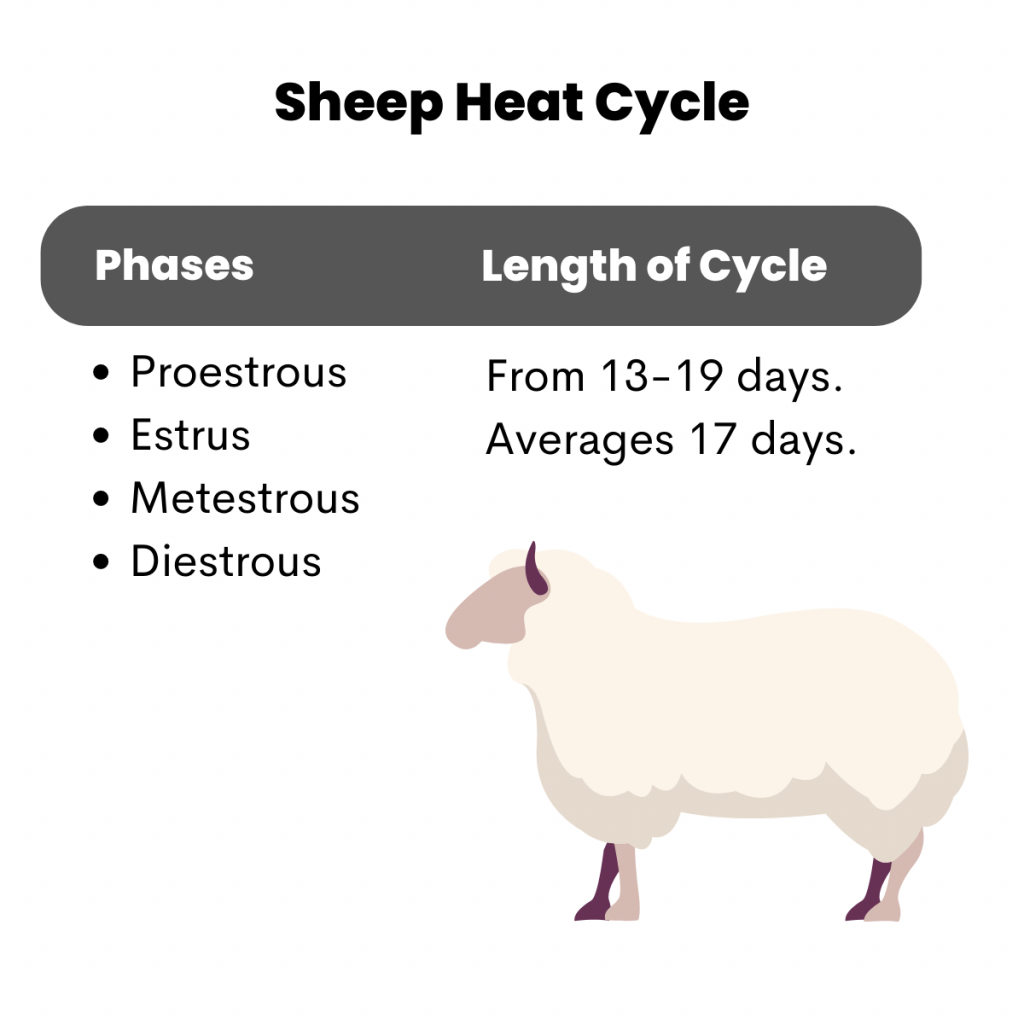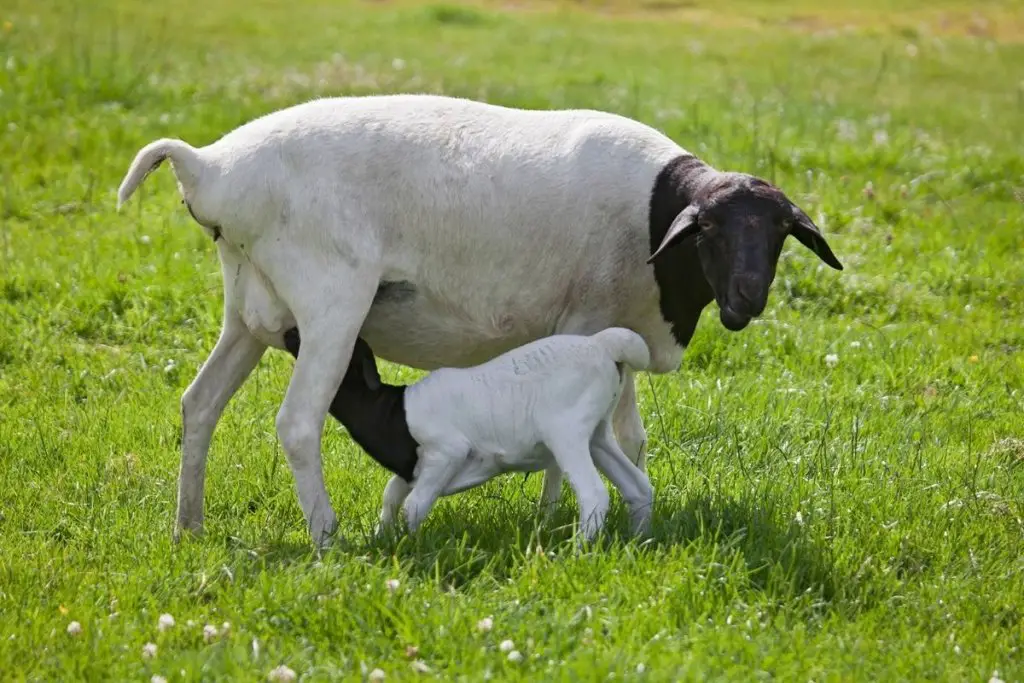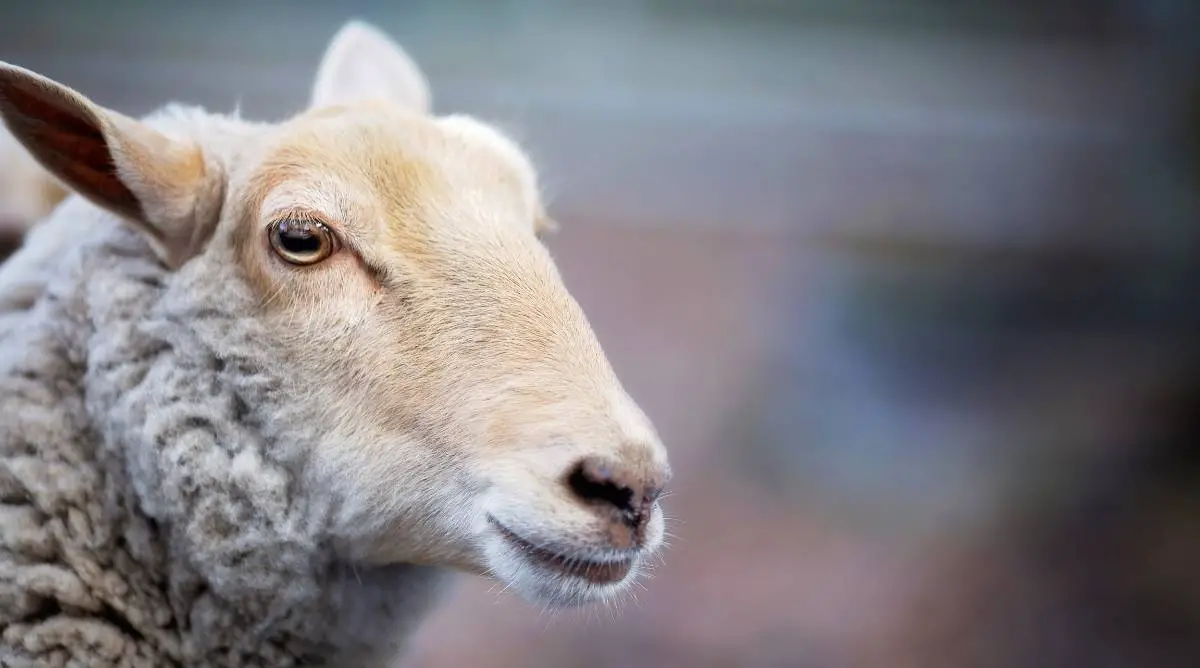The sheep heat cycle, also known as the estrous cycle, is the reproductive period in sheep during which ovulation occurs and ewes may become pregnant. You can tell if a sheep is in heat by looking for restlessness, increased fluid intake, and faster breathing, among other signs. Sheep heat cycles range from four months to as long as eight months, depending on the breed.
Table of Contents
Understanding the sheep heat cycle

After the heat cycle starts, the female sheep’s ovulation will occur within 24 hours. This signals the end of one estrous cycle.
Each cycle takes place every 17 days on average, but each individual sheep’s cycle can vary, falling somewhere between 13-19 days. The peak of the cycle lasts between one day and 1.5 days.
The sheep’s estrous cycle has four main phases:
- Proestrous
- Estrus
- Metestrous
- Diestrous
During the estrus phase, which lasts 24-36 hours, the ewe is ovulating and is receptive to rams for mating.
How can you tell when a sheep is in heat?
Here are some behaviors to know if your sheep is in heat:
- Restlessness
- Constantly looking for shade
- Faster breathing than usual
- Staggered movements
- Increased fluid intake
- Decreased appetite
- Bunching
Managing sheep reproduction
The following are some of the tried and tested methods to make it easier for you to predict or “control” your sheep’s breeding season:
The hormonal method
You can synchronize the breeding season among all of your sheep by simultaneously injecting them with progestogens (such as progesterone), estrogens, prostaglandins, or gonadotropins. This makes your herd easier to manage since all sheep go into heat around the same time.
Make sure to inject the same type of hormones at the same time to keep the entire herd in sync.
Artificial insemination
Artificial insemination is the process of implanting frozen ram semen in pregnant ewes during the breeding season. Artificial insemination gives an additional layer of control and avoids the variable of introducing rams to your flock.
Marking harness
Also known as sheep breeding harness or just sheep harness, this device is fitted to rams and has a slot for a marking crayon.
Marking harnesses let you know if your ram is actively mating with the ewes. After they mate, there is a clear marking above the hips of the ewe.
It will also give you an idea of the due date for each of the mounted ewe. This will help you make the necessary preparations before the next number of lambs come.
Reproductive cycle of ewes

Ewes typically have their first heat cycle at between 5-12 months old.
Ewe heat cycles average about 17 days long.
Once pregnant, it takes about five months for ewes to go through gestation before they are finally ready to give birth.
As the ewes give birth, the heat cycle will die down for a few months as they prioritize taking care of the young ones. Their lactation cycles also kick in, which will further dampen their desire to mate.
Length of breeding season in different breeds
Different breeds of sheep can have breeding seasons of different lengths.
Sheep breeds with long breeding seasons
The long season lasts for an average of 6-8 months. Breeds with long breeding seasons include:
Katahdin, Targhee, Navajo-Churro, St. Croix, Romanov, Rambouillet, Merino, Finnsheep, Dorset, Katahdin, Dorper, Barbados Blackbelly, and Polypay.
Sheep breeds with medium breeding seasons
Medium seasons last for 4-6 months. Breeds with medium breeding seasons include:
Shetland, Romney, Oxford, Lincoln, Jacob, Icelandic, East Friesian, Cotswold, Cheviot, and Border Leicester.
Sheep breeds with short breeding seasons
The short season takes less than 4 months to complete. Breeds with short breeding seasons include:
Columbia, Hampshire, Corriedale, Shropshire, Montadale, Southdown, Texel, Suffolk, and Tunis.

